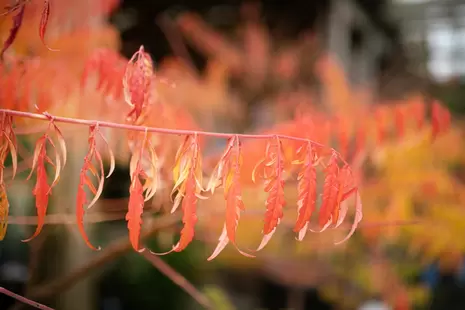Blueberries
Popular and tasty; what we know as "blueberries" are a native North American shrub called a highbush blueberry (Vaccinium corymbosum).
Choosing a Site
Blueberries should be planted in a sunny open spot, away from shade trees or hedges, which can rob their shallow roots of moisture. They need acid soils (pH 4.5 - 5.5) rich in organic matter. Where soils are heavy, or subject to drying, a 10cm to 20cm (4” to 8”) layer of mulch, peat moss, shredded leaves, or pine needles can be applied.
Planting
It is best to plant in early spring or the fall before growth starts. Most blueberries should be spaced 1.5m (5’) apart with 2m (6.5’) between the rows.
Blueberries have shallow, fibrous roots, which means the majority of their roots are in the in the top 35cm (14”) of soil. Because of this regular watering and thick mulch are critical to establishing a healthy plant. A good practice to ensure a strong root system (and healthier plant in the long term) is to remove flowers in first year. This diverts the plants energy into making roots instead of berries. It’s a hard thing to do but you will reap the rewards in the future.
Fertilizer
Unlike other fruiting plants blueberries have relatively low nutrient needs. They thrive in acidic soils but will stress if the pH changes too drastically, and can suffer from over-fertilization, so be a little cautious with application. A balanced fertilizer (GARDENWORKS All Purpose 6-8-6) applied in March is best. For organic gardeners, blood meal, fish emulsion or cottonseed meal are great options. Because blueberries have shallow fibrous roots, fertilizers should not be applied close to the main stem of the plant. Place fertilizer around the plant from the edge of the drip line to no closer than 20cm (8”) from the outer canes.
Pollination
Most highbush blueberry cultivars are self-fertile but benefit greatly from cross-pollination. Any two cultivars will pollinate one another, regardless of harvesting season.
Pests and Diseases
Few insects and diseases bother blueberries. The blueberry maggot and fruit fly are unlikely to find a small backyard planting, but birds may. Protect your berries against birds by covering the plants with netting well before the berries begin to ripen.
Pruning
Plants less than five years old require little pruning other than to remove weak growth and shape the bush. Blueberries fruit near the tips of two to five year-old branches. From the sixth year on, one to two of the oldest canes should be removed each year (these older canes will not be as productive). Cut the old canes off at ground level. Thin the bush to allow light into the interior of the plant and aid in air circulation. Start thinning with the most undesirable, weak stems.
Harvest
In the first four years, highbush blueberry plants will produce variable and generally small crops. From the fifth year on about 2-5kg (4.4-11lb) per bush may be expected. The harvest season extends from mid-July for early varieties to September for late varieties. The cropping/harvesting period for any one variety is about six weeks.
Blueberries mature about 50-60 days from pollination.
Click here for a printable PDF.
Varieties
Early-season
(ripens early to mid-June)
Blue Jay: Excellent quality, light blue, mild flavoured, medium-large fruit in an open loose cluster. An extremely vigorous plant.
Duke: Plants are vigorous, upright, and consistently productive. Berries are medium sized and firm.
Northland: A very hardy variety for colder regions with medium sized, firm, good flavoured, medium blue coloured fruit. With a spreading growth habit, it can reach 1.2m (4’) at maturity.
Patriot: Another winter hardy variety with large, flavourful berries. An upright growth habit, that can reach 1.2m to 1.8m (4’ to 6’) in height.
Mid-season
(ripens early to mid-July)
Bluecrop: A medium hardy variety with slightly tart, large, light blue fruit that store well and are excellent for cooking. An upright growth habit, that can reach 1.2m to 1.8m (4’ to 6’) in height.
Rancocas: This heritage variety has mild, sweet berries that have been described as slightly lemony. An excellent shrub with a tall, erect, open arching habit. Its leaves smaller than other varieties and it benefits from heavy pruning.
Late-season
(ripens late July into August)
Dixi: The firm, medium blue berries are sweet and among the largest and tastiest. The tall and open habit needs heavy pruning.

